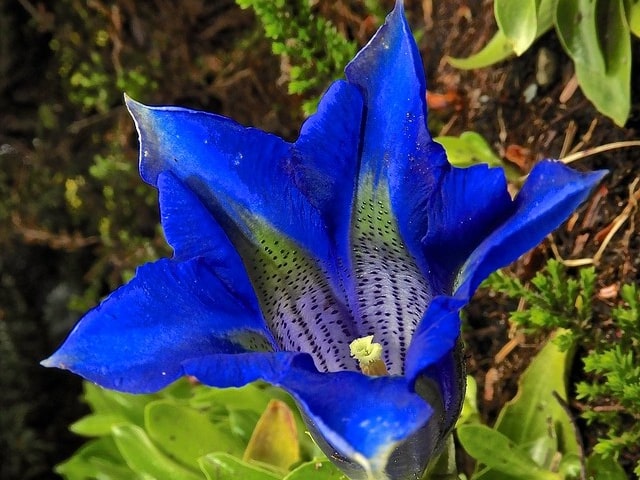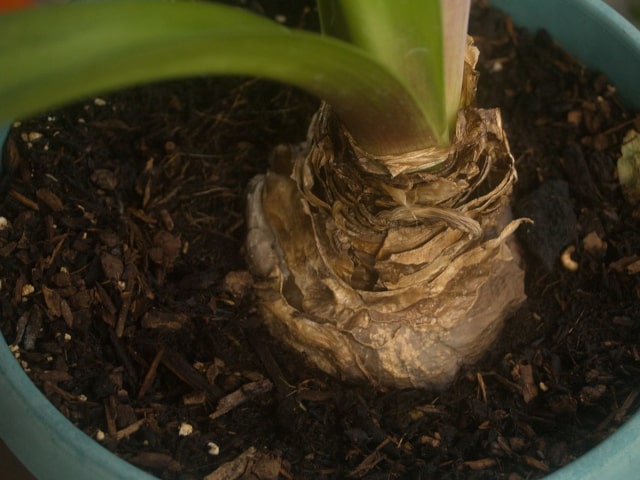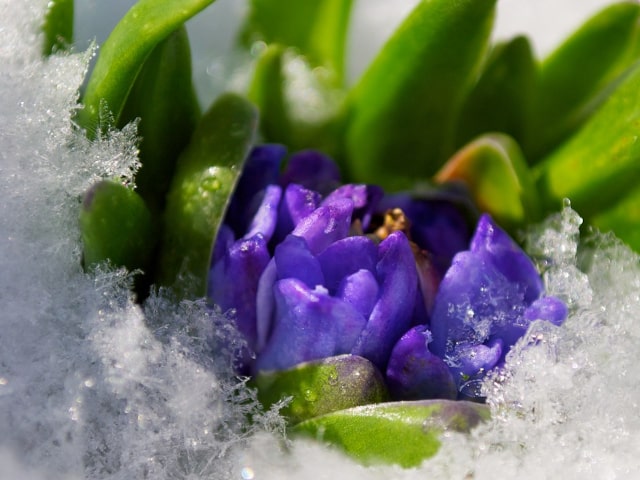
Moses in the Cradle (Tradescantia spathacea) is a beautiful plant that will make a great addition to your garden. To make your Moses in the Cradle thrive, it is important to provide it with all care and proper conditions it needs.
Moses in the Cradle Basic Information
This plant is known under many names: oyster plant, thoeo tricolor, boat lily and Moses in a basket. Moses in the Cradle and Moses in the Basket names come from plant's flowers: they are white and small, and sit in a dark purple leaf, called a bract. The leaf resembles a boat, hence the name.
Moses in the Cradle grows to about one foot in height. It spreads easily to form a clump that is about two feet wide.
Moses in the Cradle can thrive as a houseplant indoors, or you may grow it in your garden. Keep in mind that this plant can tolerate climate environments in the US hardiness zones 9 to 11. If you wish to have Moses in the Cradle in your yard, make sure it can withstand your climate conditions.
The good news is that this is a generally hardy plant that is easy to grow. It is tolerant to many environments and it is not difficult to care for. The main thing you need to provide is consistent moisture: this plant needs it to thrive. It can grow in both sun or in the shade, and it creates clumps of sword-shaped leaves that will look amazing in a container or in your yard.
One thing to keep in mind is that this plant can be invasive in certain parts of USA. It can easily get out of control and spread into forested areas. If you wish to plant your Moses in the Cradle outdoors, make sure it is suitable for your area.
You can prevent your plant from overspreading by removing spent flowers. This will prevent seed formation. Another thing you can do is to surround your plant with a physical barrier that extends several inches into the soil. This will prevent spreading of the clump.
Here are the most important conditions you need to provide to your Moses in the Cradle:
Lighting
Moses in the Cradle is a plant that can tolerate most light conditions. However, it prefers filtered sun or partial shade. It can grow in full sun, but it is best to give it some shade in the areas with strong, hot summer sun. Make sure to provide shade in the afternoons to avoid damage to your plant's leaves.
If you choose to grow Moses in the Cradle indoors, make sure to provide it with bright but indirect light. It should receive this sort of light for six to eight hours per day. A good choice is a south or west-facing windowsill, preferably with a light curtain. This arrangement will give your plant enough sunlight without becoming too much.
Watering
If you choose to grow your Moses in the Cradle outdoors, keep in mind that it prefers consistently moist soil with good drainage. Once it is established, it can tolerate some dry spells, it is important to make sure it has good moisture.
The best way to improve soil moisture is to add 2-3 inches of organic mulch to the soil. It will conserve moisture and keep weeds at bay. Shredded bark or straw works great for this purpose.
Keep in mind that your plant will need less watering in the fall and winter. In warm areas, it will continue to grow during this period but it will be dormant and it will not grow as quickly. Make sure to reduce watering during this period.
If you grow your Moses in the Cradle indoors, make sure to water it whenever you feel that the top 1-2 inches of the soil has dried up. The best way to check is to place your fingertip into the soil. Your Moses in the Cradle requires proper moisture.
On the other hand, make sure not to overwater. You should never leave your plant sit in the water, since this can lead to root rot and fungi. Never allow water to accumulate in the saucer. Use a pot that has drainage holes and remove any excess water.
In the fall and winter, you can allow the soil to dry out a bit between waterings. This will give your plant some rest.
Fertilizing
If you choose to grow your Moses in the Cradle outdoors, it doesn't need any fertilization, as long as the soil is fertile and rich in organic content. In the spring, you may provide your plant a boost by adding a 1-2 inches of compost into the soil. If you choose to do that, make sure you are careful not to disturb its roots.
In case you grow your Moses in the Cradle indoors, you will need to fertilize more often. Give it a balanced, 10-10-10 fertilizer diluted at a rate of 1/4 teaspoon in 1 gallon of water. Read labels carefully for proper directions and application. Make sure to fertilize it like this every three months.
Pruning
Moses in the Cradle doesn't require regular pruning. You may choose to trim it back a little each spring. This will keep it within bounds and will make the plant look neater. When pruning, make sure to cut the plant back to a height of a few inches. Make sure to use sterile shears: rub them with alcohol between cuts to prevent the spread of disease.
Diseases and Pests
A great thing about Moses in the Cradle is that it is not susceptible to many diseases, as long as you grow it in well-drained soil. Make sure to plant it in appropriate medium that can retain moisture but can also drain well.
Moses in the Cradle has a few common pests. The most common are mealybugs and whiteflies. Another pests are spider mites, which are not visible to the naked eye, but can be suspected by a web-like covering they produce on young leaves.
The best way to prevent and control these pests is to spray your plants with an insecticidal soap. Repeat this remedy every one to two weeks, as needed. Make sure to wear protective gloves and goggles, as well as long sleeves and long pants when spraying plants with insecticides.
Photo credit: Wendy Cutler




0 Comments